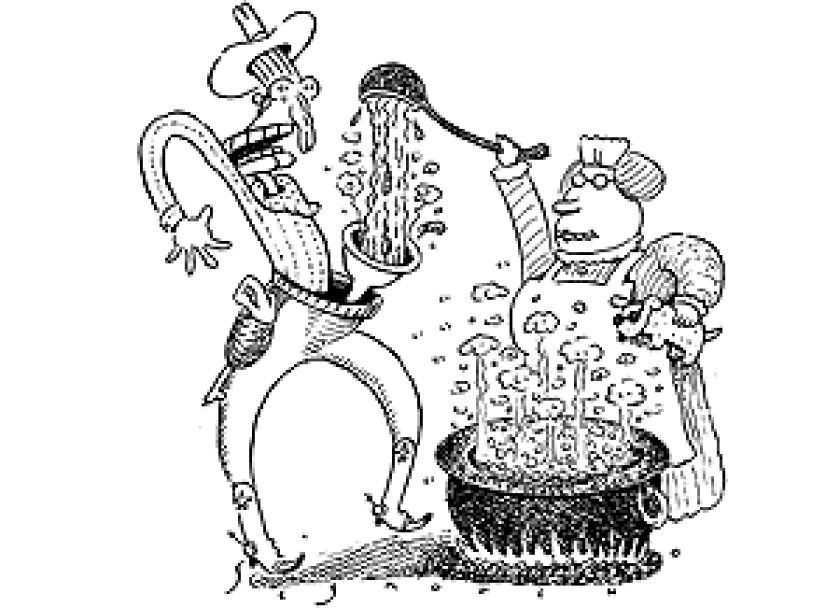Dear Cecil: I recently acquired a satellite dish and have become a shameless junkie of old westerns. In half of these B movies of plains life, it seems there is always a woman giving birth. After they give her the obligatory wooden spoon to bite on, someone always yells to boil some water. What’s with the water? Ryan Bailey, via the Internet
Cecil replies:
Really. Your first thought is that the boiling water was dreamed up by male scriptwriters who had never witnessed the miracle of childbirth. Anyone who’s actually assisted at one thinks: I don’t need boiling water, I need a bucket and a mop. A midwife we talked to jokingly suggested it was an excuse to get the husband out of the room.
But there was probably more to it than that. Midwives and such have been heating water since time immemorial to wash mother and baby following delivery. Water could also be used for warm compresses to soften the perineum, reducing the chances of tearing and easing the pain.
You didn’t necessarily boil the water, though. Boiling water kills germs, but this was not widely understood until the late 19th century. Prior to that time few saw the need for cleanliness. Doctors in the 1780s, for example, complained about midwives with dirty hands poking around in the mother’s innards during labor.
Truth is, as long as it was just midwives doing the poking, sterility wasn’t that important. Only when doctors got involved did it become a matter of life and death. During the 19th century, as doctors began to supplant midwives at the bedsides of women giving birth, there was an alarming rise in complications such as puerperal fever. This often fatal illness resulted from the infection of vaginal or other tissue torn during childbirth. Midwives weren’t major carriers of this disease, because they saw only a handful of patients a week. A doctor, on the other hand, might handle diseased tissue during an autopsy and then proceed to the delivery room, where he’d unwittingly infect the mother.
Some doctors tried to warn of the danger, notably the Hungarian physician Ignaz Semmelweis. But few paid much heed until 1880, when Louis Pasteur showed that puerperal fever was caused by a particular type of bacteria. Meanwhile the English physician Joseph Lister was persuading his colleagues of the importance of antiseptics in surgery. By 1885 hospitals had begun to adopt antiseptic methods such as boiling water to sterilize instruments, including those used during childbirth. (Previously many cases of tetanus had resulted from cutting the umbilical cord with a dirty knife or scissors, and of course there were the infamous forceps.) Presumably word about antiseptic practices eventually reached the prairies, and boiling water both to sterilize things and, after it cooled, to wash the hands of the attending midwife/doctor/cowpoke became a standard part of the prenatal drill.
That’s not to say no one ever boiled water before the 1880s. Here’s a recipe for a concoction intended to hasten the delivery of a stillborn, from The Midwives Book (1671) by Jane Sharp:
Take Oyl of worms, of Foxes, and of the Lillies of the Vallies, each alike, boyl a young blind Puppey in them, so long that his flesh part from the bones; then press forth all strongly, and add to the straining, Styrax, Calamint, Benzoin, Opopanax, Frankincense, Mastik, of each one dram, a little Aqua Vitae, a little wax; mix them and make of them an Ointment; then let her drink often of this Potion following.
I mean, lest you get too rosy an impression of midwives.
Cecil Adams
Send questions to Cecil via cecil@straightdope.com.
